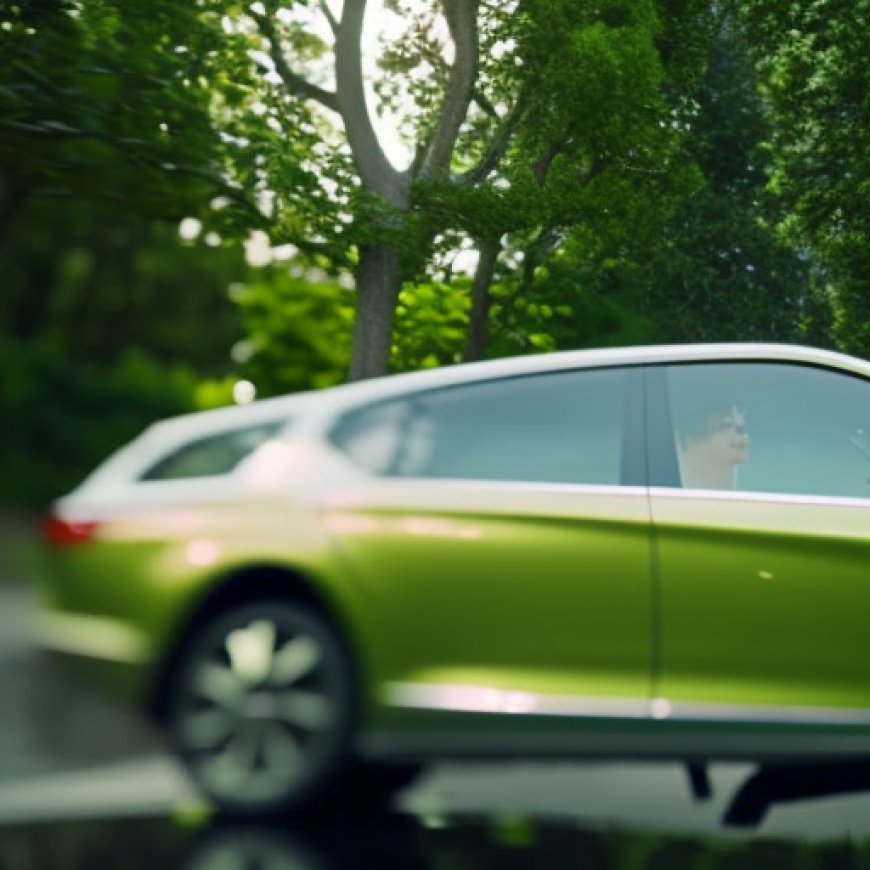How do electric cars work?
How do electric cars work? WHNT News 19


How Do Electric Cars Work?

Electric vehicles (EVs) are gaining market share at a rapid pace, with sales of EVs growing by 55 percent in 2022 compared to 2021 according to the International Energy Agency. That number is expected to grow further in 2023.
As many consumers consider an electric vehicle for their next car purchase, they may be curious about how these electric vehicles work. After all, today’s electric cars look and drive like traditional gas-powered cars, but it’s important to understand the differences between these two vehicle types.
What are the Parts of an Electric Vehicle?
To understand how an electric car works, it’s important to understand its main components.
- Traction Battery Pack
- Power Inverter
- Electric Motor
- Charge Port
- Transmission
- DC/DC Converter
- Thermal System – Cooling
EV Charging
Electric vehicle batteries differ from an internal combustion engine vehicle’s battery in that they power the entire vehicle rather than simply anchoring a gasoline-powered car’s electrical system. While traditional gasoline-powered cars refuel at the pump, electric vehicles are powered by electricity and are “refueled” by recharging the battery.
- Level 1:
- Level 2:
- Level 3: DC Fast Charging
Regenerative Braking
Hybrid cars and electric vehicles use an alternative braking method compared to the traditional braking system on gasoline cars known as regenerative braking. With regenerative brakes, the energy from each wheel during braking is sent back to the battery. This, in turn, helps charge electric car batteries while the car is in use. An EV’s regenerative braking system supplements the brake pads and rotors found on traditional cars.
Types of Electric Vehicles
Electric vehicles can be classified into four main categories.
- All-Electric Vehicles
- Plug-In Hybrid Electric Vehicles
- Hybrid Electric Vehicles
- Fuel Cell Electric Vehicles
Today’s electric cars look and drive like traditional gasoline-powered cars, but they have fewer moving parts and require less maintenance. It’s important to understand how electric cars work before you consider purchasing an EV.
If you’re in the market for a new or used electric vehicle you can search over 4 million used electric cars, SUVs, and trucks with iSeeCars’ award-winning car search engine that helps shoppers find the best car deals by providing key insights and valuable resources, like the iSeeCars free VIN check report and Best Cars rankings. Filter by vehicle type, front or all-wheel drive, and other parameters in order to narrow your car search.
This article, How Do Electric Cars Work?, originally appeared on iSeeCars.com.
SDGs, Targets, and Indicators in the Article
1. Which SDGs are addressed or connected to the issues highlighted in the article?
- SDG 7: Affordable and Clean Energy
- SDG 9: Industry, Innovation, and Infrastructure
- SDG 11: Sustainable Cities and Communities
- SDG 13: Climate Action
2. What specific targets under those SDGs can be identified based on the article’s content?
- SDG 7.2: Increase substantially the share of renewable energy in the global energy mix.
- SDG 9.4: Upgrade infrastructure and retrofit industries to make them sustainable.
- SDG 11.2: Provide access to safe, affordable, accessible, and sustainable transport systems for all.
- SDG 13.2: Integrate climate change measures into national policies, strategies, and planning.
3. Are there any indicators mentioned or implied in the article that can be used to measure progress towards the identified targets?
- Percentage increase in sales of electric vehicles compared to previous years (indicator for SDG 7.2).
- Number of electric vehicle charging stations installed (indicator for SDG 9.4 and SDG 11.2).
- Reduction in greenhouse gas emissions from transportation sector (indicator for SDG 13.2).
Table: SDGs, Targets, and Indicators
| SDGs | Targets | Indicators |
|---|---|---|
| SDG 7: Affordable and Clean Energy | 7.2: Increase substantially the share of renewable energy in the global energy mix. | Percentage increase in sales of electric vehicles compared to previous years. |
| SDG 9: Industry, Innovation, and Infrastructure | 9.4: Upgrade infrastructure and retrofit industries to make them sustainable. | Number of electric vehicle charging stations installed. |
| SDG 11: Sustainable Cities and Communities | 11.2: Provide access to safe, affordable, accessible, and sustainable transport systems for all. | Number of electric vehicle charging stations installed. |
| SDG 13: Climate Action | 13.2: Integrate climate change measures into national policies, strategies, and planning. | Reduction in greenhouse gas emissions from transportation sector. |
Behold! This splendid article springs forth from the wellspring of knowledge, shaped by a wondrous proprietary AI technology that delved into a vast ocean of data, illuminating the path towards the Sustainable Development Goals. Remember that all rights are reserved by SDG Investors LLC, empowering us to champion progress together.
Source: whnt.com

Join us, as fellow seekers of change, on a transformative journey at https://sdgtalks.ai/welcome, where you can become a member and actively contribute to shaping a brighter future.







